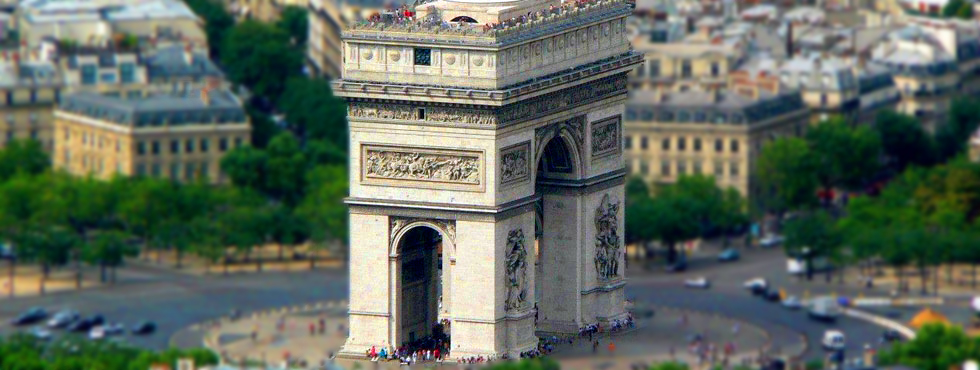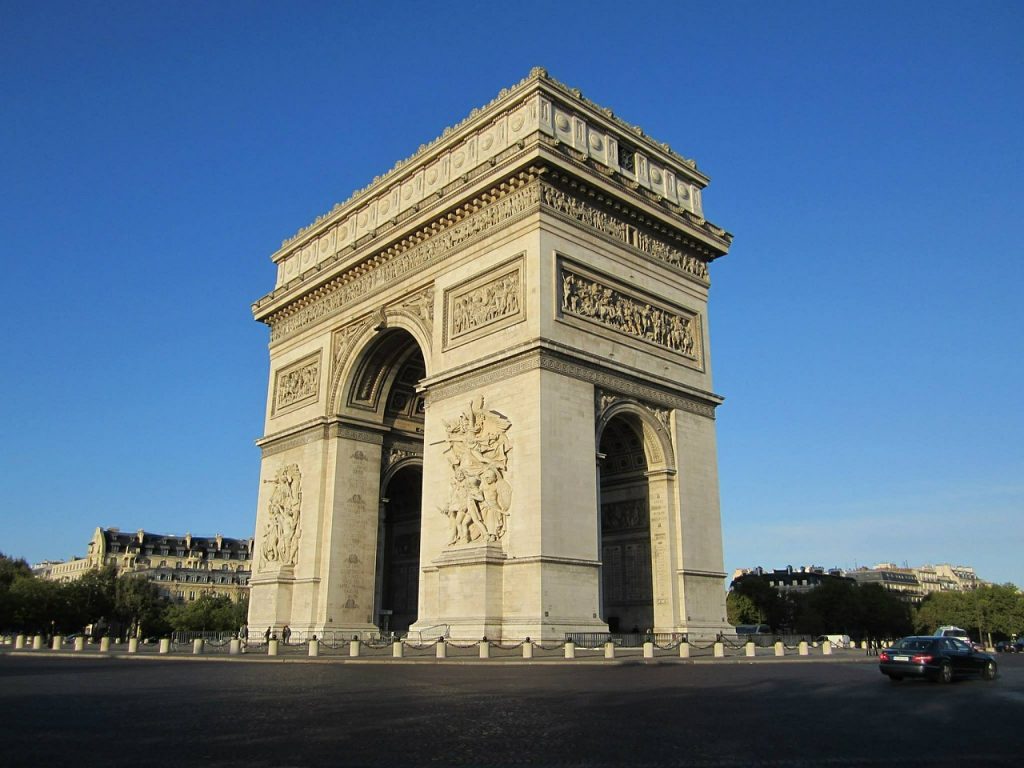Arc de Triomphe

There is no doubt that everyone visiting Paris for a vacation is going to want to get a great shot in front of the world’s most famous Arch for Instagram.
The Arc de Triomphe Paris, the most monumental of all triumphal arches, was built between 1806 and 1836. Even though there were many modifications from the original plans (reflecting political changes and power struggles), the Arch still retains the essence of the original concept which was a powerful, unified symbol for France.
The Arc de Triomphe stands at the center of the Place Charles de Gaulle, also known as the “Place de l’Étoile”. It’s located at the western end of the Champs-Élysées. The arches whole decorative style is entirely of the tradition of sculpture from the first half of the nineteenth century.
The triumphal arch is in honor of those who fought for France (and in particular, those who fought during the Napoleonic wars). Engraved on the inside and at the top of the arch are all of the names of the generals and wars fought. There are inscriptions in the ground underneath the vault of the arch which include the Tomb of the Unknown Soldier from World War I where the Memorial Flame burns and have made the Arc de Triomphe Paris a revered patriotic site.
The monument is considered the linchpin of the historic axis (L’Axe historique) — a sequence of monuments and grand thoroughfares on a route which stretches from the courtyard of the Louvre Palace to the outskirts of Paris.
Groups, friezes, figures and beys-reliefs are the signature works of James Pradier, Antoine Etex and Jean-Pierre Cortot. But there is no question that the most celebrated sculpture is the work of Francois Rude: La Marseillaise.
The Arc de Triomphe stands 49.5 m (162 ft) tall, 45 m (150 ft) wide and 22 m (72 ft) deep. The vault is 29.19 m (95.8 ft) high and 14.62 m (48.0 ft) wide. The smaller vault is 18.68 m (61.3 ft) high and 8.44 m (27.7 ft) wide.
The Arc de Triomphe Paris’ Memorial Flame
Two years after the exhumation of the Unknown Soldier, journalist and poet Gabriel Boissy launched the idea of a Memorial Flame, which immediately received enthusiastic public approbation. With active support from Andre Maginot then Minister of War), Leon Berard (Minister of State Education), and Paul Leon (Director of Fine Arts), the project advanced rapidly.
Edgar Brandt, a wrought iron craftsman, was selected to execute the torch, designed by architect Henri Favier: a circular bronze shield at the center of which opened a cannon muzzle from which radiated a frieze of swords. On 11 November 1923, surrounded by a multitude of former combatants, Maginot ignited the flame for the first time. Since that moment, the flame has never been extinguished.
A daily ritual pays tribute to the Great Dead: each evening, at six-thirty, a flame is rekindled by one of the nine hundred associations of former combatants regrouped under the association La Flamme sous l’Arc de Triomphe. During the Occupation, this daily kindling rite was performed unperturbed. On 26 August 1844 at three o’clock in the afternoon, before descending triumphantly down to Champs-Elysees within liberated Paris, general Charles de Gaulle came to lay down the white-flowered Cross of Lorraine on the Tomb of the unknown Soldier. Since then, the Arc de Triomphe has provided the framework for all great national celebrations: 11 November, 8 May, and, of course, the national fete of 14 July.
So when you are visiting Paris and visit this Arch, let it bring you back in time.
